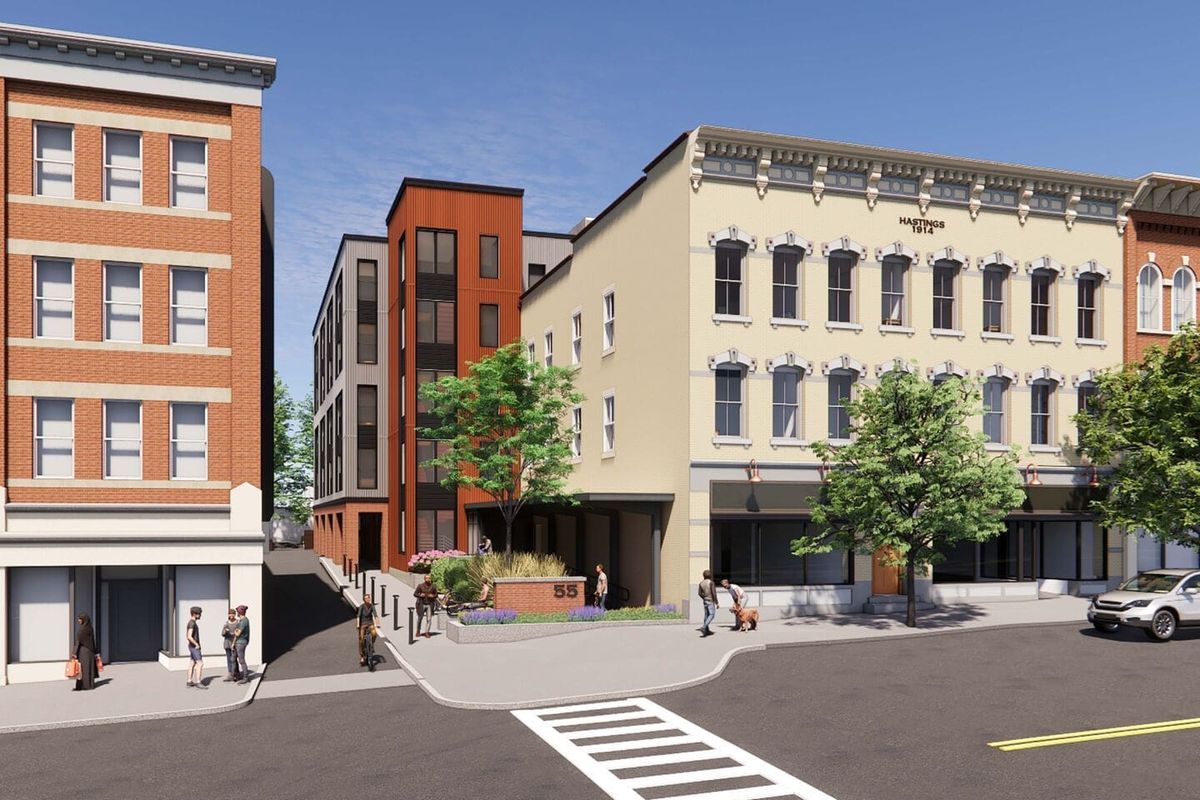College to Open Dorm Above Amherst College Store
The new dorm will include suites and in-unit kitchens and bathrooms, exciting students. But some town residents say it violates town zoning codes.

Sixty-three students may be living in downtown Amherst as early as next fall.
The college revealed its plans to lease the space above and behind the Amherst College Store on South Pleasant Street during an Oct. 16 town planning board meeting. The newly renovated building will boast singles, doubles, and three- and four-person suites — 63 total beds. All 22 units will have their own kitchens and bathrooms, according to proposed floor plans.
Town residents have expressed concern about the plans since they became public last week. Some residents said that the planning board made a mistake in approving the project, pointing to a section of the town’s zoning bylaw that bans dormitories in the downtown area.
Mike Thomas, chief financial and administrative officer, said the college decided to lease the space to alleviate overcrowding in Cohan in the short term and provide a longer-term alternative to Val, which “will likely be coming offline following the completion of the Climate Action Plan in 2030.” He said the project is expected to be completed by the fall of 2025, though he conceded that this is a “very tight timeline.”
As for the zoning concerns, Thomas said the college will comply with all bylaws. “If a revision becomes necessary, we would fully support the zoning laws and the planning board,” he said.
The developer who owns the building, Barry Roberts, had originally told town planners he would rent the renovated units above and behind the store to students, likely from UMass. The building was approved as a mixed-use property, not a dormitory, this summer. Thomas said the college asked about leasing the units earlier this year after securing the lease for the college store.

Maura Keene, a longtime town resident who covered the planning board meeting in The Amherst Indy, said there was no discussion of the potential zoning violation at the meeting.
“The planning board really screwed up,” she said. “The head of the [town’s] planning department [Christine Brestrup] just retired at the end of September, so maybe she would have called it to their attention.”
The planning board is made up of volunteers who are advised by employees of the planning department.
Keene said it was not clear how the board would proceed, given that the project has already had the green light. “I don’t know what if anything’s going to happen with that, or if people are just going to shrug their shoulders,” she said.
A number of town residents have argued that the downtown space should instead be made available for long-term, year-round residents who might have more of a stake in the town.
Several of these residents raised concerns at the Oct. 16 planning board meeting. Some board members expressed sympathy with their views, including Chair Doug Marshall. He ultimately said, though, that the board did not have the authority to reject the proposed changes. Others pointed to the fact that Roberts had been renovating the building with students in mind from the beginning, suggesting that the units would never have been very appealing to the general public.
David Farnham has lived in Amherst for 32 years. In an interview with The Student, he complained of the “lack of diversity that this project brings to downtown Amherst when we already have, at all ends, a substantial amount of [UMass] student housing in downtown.”
Although he believes that college students are the backbone of the area’s community and economy, he said that it would be better for local businesses if more year-round residents were able to settle closer to the town center. “All this student housing,” he said, “none of it has supported any real businesses. It doesn’t spill out like that.”
Students, on the other hand, seemed to be excited about the prospect of a new dorm.
“We do need more housing in general,” Seth Yoo ’26 said. “Cohan is ridiculous.”
“The kitchen and bathrooms are definitely a plus,” Kate Bestall ’27 said.
Adrian Salgado ’27 said he was excited to see what kind of culture formed in the campus’ new downtown outpost, adding that he wasn’t overly concerned about the distance from campus.
“It’s far,” he said, “but then again, it’s still closer than Tyler and Plimpton.”





Comments ()